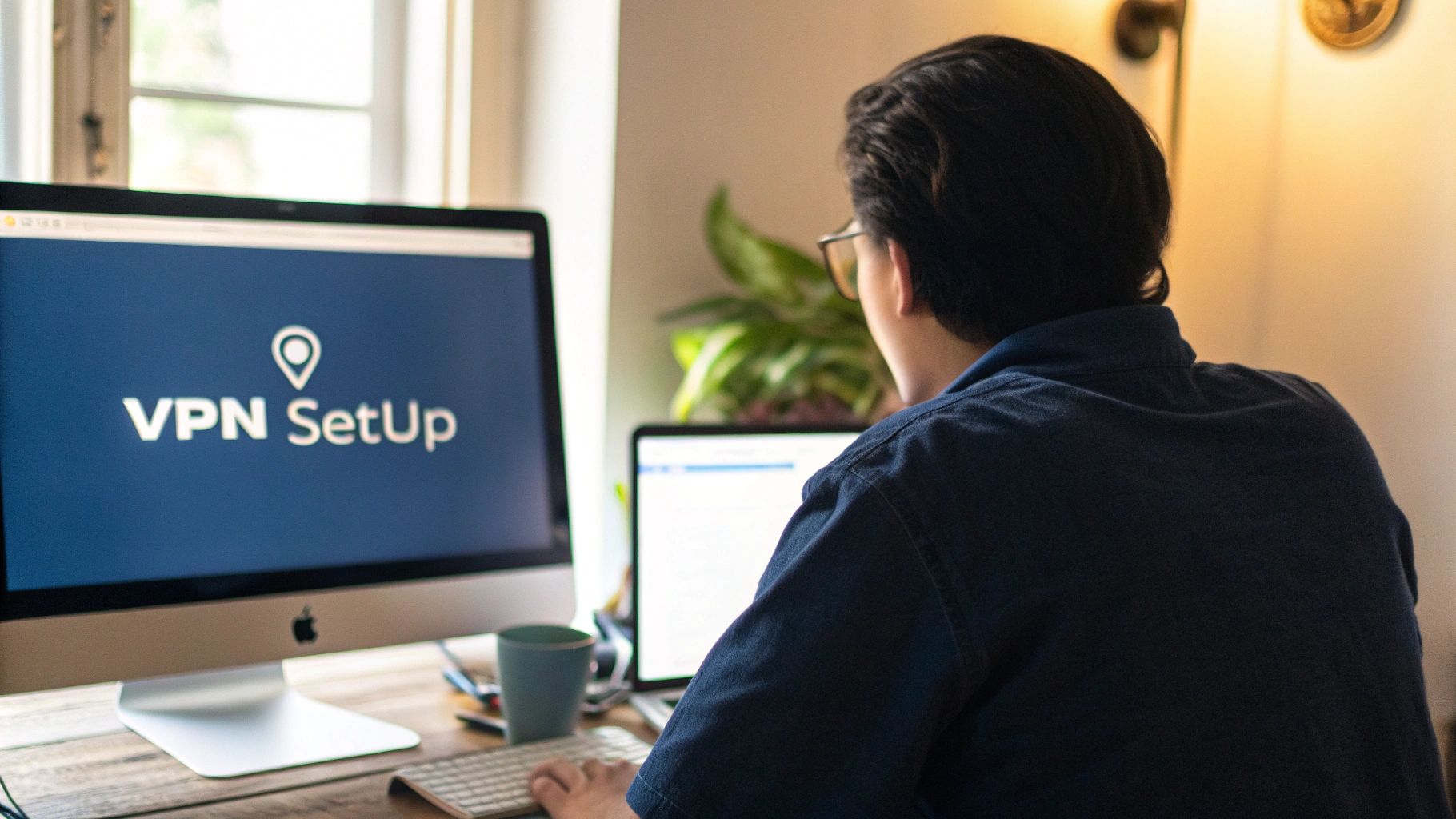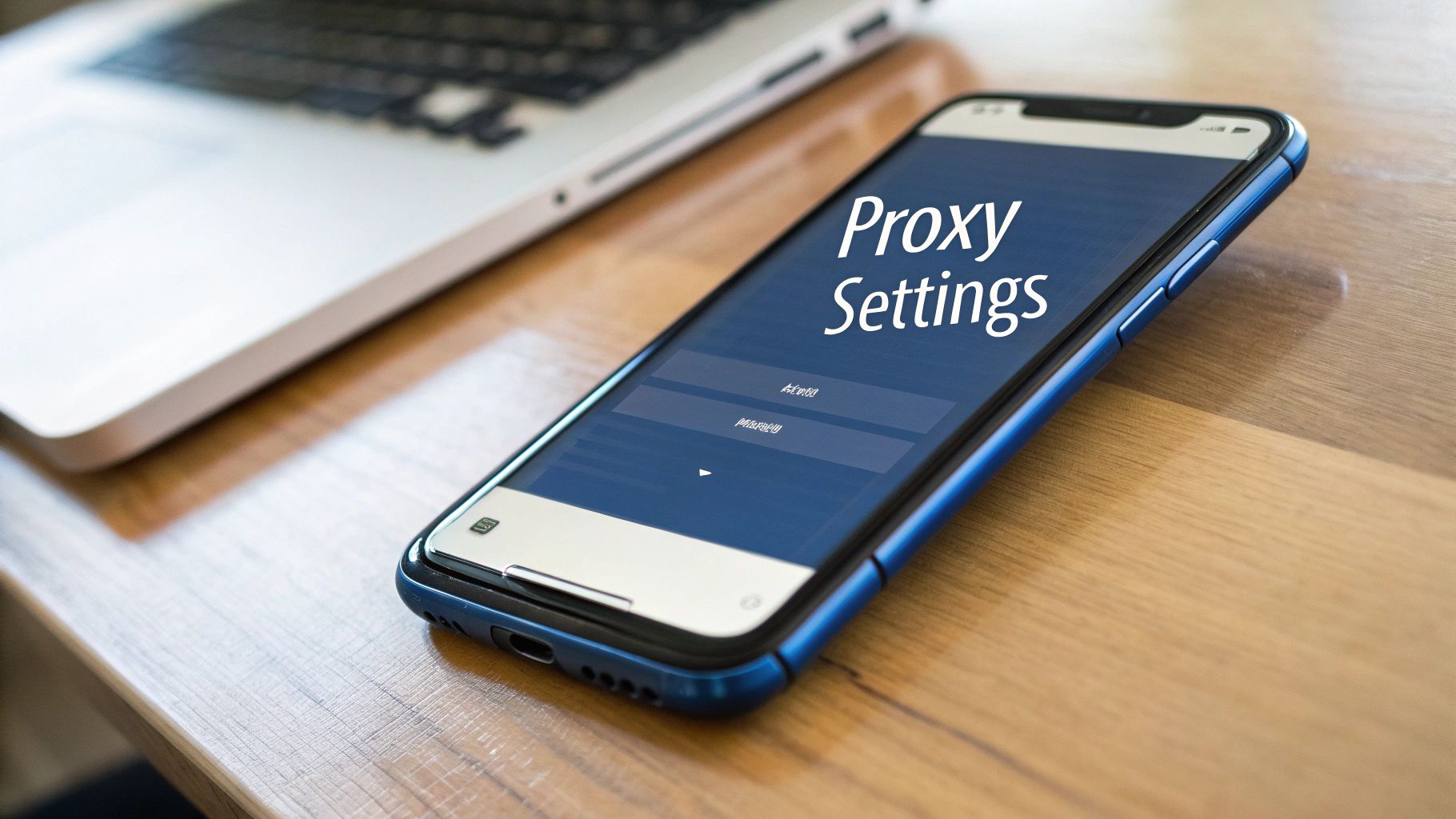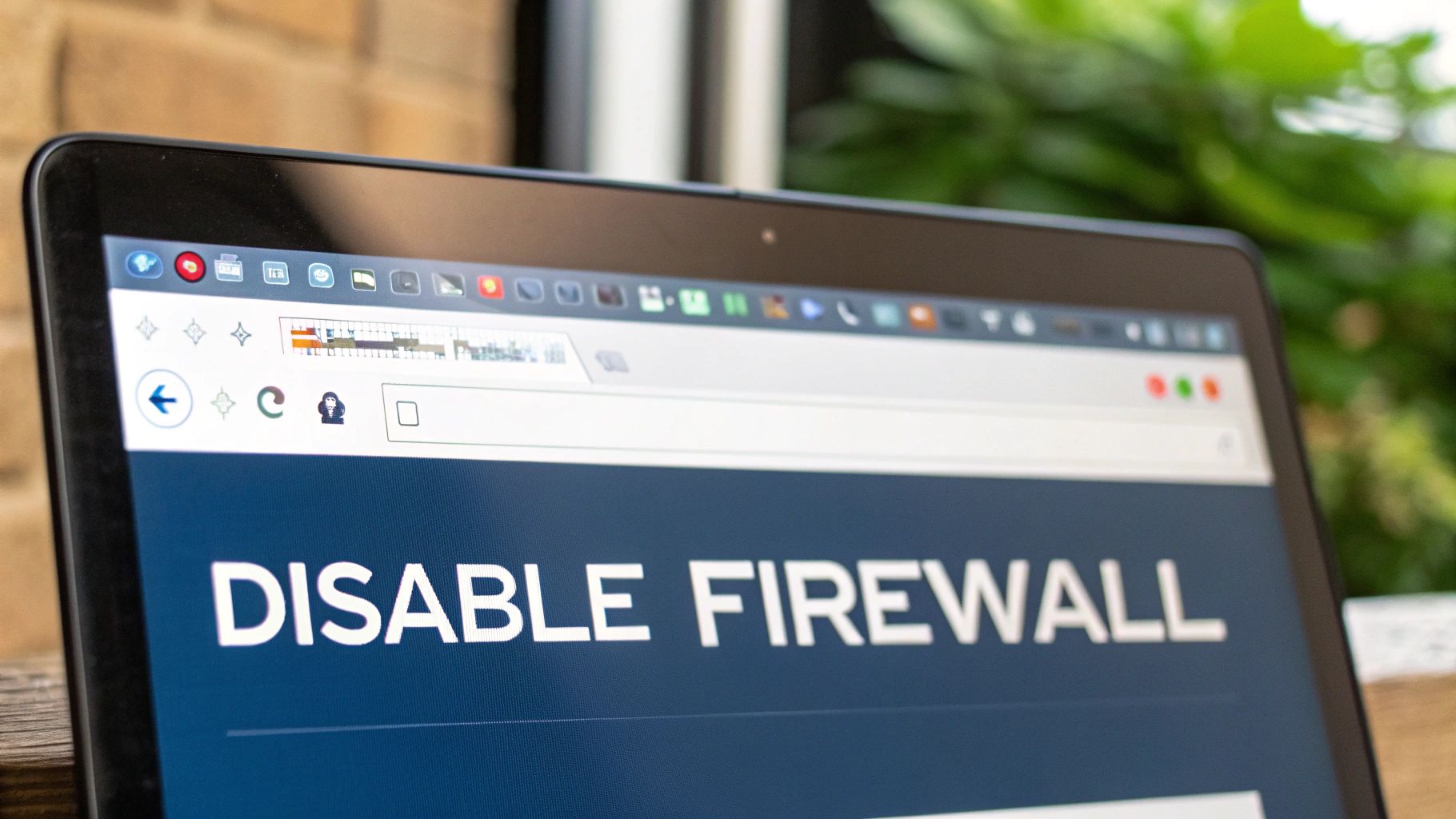How to Access Blocked Websites: Your Complete Guide to Safe Internet Access
Understanding Website Blocking and Digital Freedom
Website blocking affects how millions of people access and use the internet each day. Understanding what it is and how it works helps users make informed choices about accessing blocked content. This article explores the key aspects of website blocking and what it means for internet users.
Types of Website Blocking
Different groups block websites for various reasons using different methods:
- Governments use nationwide filters to control information access
- Schools and universities block social media to help students focus
- Companies restrict certain sites to protect their networks
- Parents use filtering software to protect children online
The Impact of Internet Restrictions
When websites are blocked, it can create real challenges. Journalists may struggle to research stories, students might have trouble accessing educational resources, and businesses could face barriers reaching customers. In some cases, blocking serves legitimate purposes like preventing cybercrime. A recent example shows the scale of impact – in Pakistan, VPN usage jumped by 342% in a single day when social media restrictions increased. See the full data here: VPN Demand Statistics
Balancing Access and Responsibility
Making good choices about blocked websites requires understanding both rights and responsibilities. While bypassing blocks may sometimes be necessary, it's important to:
- Know local laws about internet access
- Respect terms of service agreements
- Avoid using circumvention tools for illegal activities
- Consider the ethical implications
The Future of Digital Freedom
As blocking technology improves, new tools and methods emerge to help people maintain internet access. Staying informed about online privacy and security helps users protect their digital rights while being responsible internet citizens. The key is finding the right balance between accessing needed information and respecting legitimate restrictions.
Legal Ways to Access Blocked Websites
Getting around website blocks requires careful attention to both legal and technical aspects. Before attempting any workarounds, it's important to understand what's allowed and what tools you can safely use.
Reading the Fine Print: Terms & Policies
Take time to review the terms of service for any website or network you're using. These documents spell out what you can and can't do. For example, using a VPN at work could get you in trouble if it's specifically banned in company policies. Checking these agreements helps you stay within bounds.
Location Matters: Your Rights & Local Rules
Internet access rights vary significantly between countries and regions. Some nations offer broad access while others impose strict limits. Research your local laws to understand what methods are legally allowed where you live. A technique that works fine in one place might be restricted elsewhere.
Finding the Right Access Tools
Many options exist for accessing blocked sites, each with different strengths. Consider these key factors when choosing a tool:
| Feature | Why It Matters |
|---|---|
| Security | Strong encryption keeps your data safe |
| Server Options | More locations = better access options |
| Data Policies | "No logs" means better privacy |
| Connection Speed | Faster is better for streaming |
| Cost | Paid services often offer better protection |
Being Smart About Privacy
If privacy matters to you, think carefully about how you access blocked content. While getting around restrictions can be important, do it responsibly. Avoid using these tools for anything illegal or harmful. Focus on legitimate uses that don't infringe on others' rights or property. This approach helps build a better internet for everyone.
Choosing and Implementing Essential Privacy Tools
Getting past blocked websites often works best when you use multiple privacy tools together. This approach gives you more options and better results. Let's look at some of the most useful tools and how they work together.
Understanding Your Options: VPNs, Proxies, and More
Several key tools can help you access blocked content. Each has different strengths, so it's important to pick the right one for your needs:
-
Virtual Private Networks (VPNs): These create an encrypted connection between your device and a remote server, hiding your real location. With a VPN, you can browse as if you're in a different country. Plus, your data stays secure thanks to encryption.
-
Proxies: Like VPNs, proxies send your traffic through another server. The main difference? Proxies don't encrypt your data, so they're less secure. They work well for basic blocks but might not handle tougher restrictions.
-
The Tor Network: Tor sends your internet traffic through multiple servers worldwide, making it very hard to track. While this gives you excellent privacy, it can be slower than other methods and might not work well for streaming.
-
Secure Browsers: Some browsers, like Tor Browser, come with built-in privacy features. These help prevent tracking and keep your browsing private.
Comparing Key Features and Making Informed Choices
When picking tools, think about what matters most to you – security, speed, or ease of use. If you need speed, try a proxy. Want maximum privacy? Go with Tor. Here's a quick comparison:
| Tool | Security | Speed | Anonymity | Ease of Use |
|---|---|---|---|---|
| VPN | High | Moderate | Moderate | Easy |
| Proxy | Low | High | Low | Easy |
| Tor Network | High | Low | High | Moderate |
| Secure Browser | Moderate | Moderate | Moderate | Easy |
Your choice depends on what you're trying to do and what level of privacy you need.
Building a Personalized Toolkit for Accessing Blocked Websites
The best approach is often to combine different tools. Using a VPN with a secure browser gives you good security while keeping decent speeds. For less sensitive browsing, a proxy works fine. Save Tor for when you need serious privacy. Try different combinations and see what works best for you.
Remember – the goal is to access what you need while staying safe online. Take time to test different setups until you find the right mix of tools.
Mastering Secure Configuration and Setup
Getting access to blocked websites requires proper setup of your privacy tools. Simply installing the software isn't enough – you need to understand the settings and adjust them properly. Let's look at how to get the most from your access solutions.
Optimizing Tool Settings for Peak Performance
Privacy tools come with various settings that affect how well they work. A VPN might offer different server locations and encryption options. Picking the right server impacts your speed, while proper encryption keeps your data safe. Similarly, privacy-focused browsers let you control trackers and cookies. Understanding these options makes a big difference in accessing blocked sites effectively.
Common Configuration Pitfalls and How to Avoid Them
Many users make the mistake of sticking with default settings without knowing what they do. This can lead to slow connections or security gaps. For instance, connecting to a distant VPN server may boost privacy but seriously slow things down. Another mistake is not updating your software, which leaves security holes open.
Key things to remember:
- Know your tools: Take time to learn what each setting does
- Try different options: Find what works best for your needs
- Keep software current: Update regularly to stay secure
Troubleshooting Techniques From Experienced Users
Even with perfect setup, problems can occur. Your VPN might disconnect, or certain sites might stay blocked. Having some basic troubleshooting skills helps solve issues quickly.
Common fixes include:
- Check basic connectivity: Sometimes simple internet problems look like blocking
- Restart your tools: Often fixes temporary glitches
- Switch servers: If your connection is slow, try a different location
- Ask for help: Many online communities offer helpful advice
These troubleshooting steps help you handle common access issues and maintain reliable connections. When you understand your tools well, you can overcome most problems quickly and keep accessing the content you need.
Building Your Privacy Protection Strategy
Getting around blocked websites safely takes more than just using random tools. You need a clear plan that considers your risks, uses multiple security layers, and stays current with new threats.
Know Your Risk Level
Before picking any privacy tools, think about what you actually need. Are you just trying to check social media at work? Or are you a reporter working in a country that restricts internet access? These scenarios need very different approaches to stay safe. For basic needs like streaming movies, a simple proxy might work fine. But journalists need stronger protection, like the Tor Network.
Use Multiple Privacy Tools Together
Good privacy protection works best when you combine different tools. Think of it like home security – you wouldn't just lock the front door and leave windows open. Using a VPN with a secure browser and smart online habits creates much better protection than relying on just one method.
For example, a VPN hides your location while a privacy-focused browser stops websites from tracking you. Adding an ad blocker gives you even more protection. This way, if one tool fails, you still have backup security in place.
Keep Up with New Technology
Website blocking methods and tracking tools keep getting more advanced. Your privacy strategy needs to keep up too. Stay informed about new privacy threats and adjust your approach when needed. If a site starts blocking VPN users, try switching VPN servers or using a different tool like a proxy. Check your privacy tools regularly to make sure they still work well.
Follow Safe Browsing Habits
Beyond using privacy tools, good online habits help protect you. Here are key practices to follow:
- Clean your browser data often: Remove history and cookies to reduce tracking
- Share less personal info: Don't post details that could identify you
- Use strong passwords: Create unique passwords for every account
- Update your software: Install security patches when available
When you combine reliable tools with smart browsing habits, you can access blocked sites while keeping your privacy intact. It takes ongoing effort to stay secure online, but protecting your digital freedom is worth it.
Overcoming Common Access Challenges
Getting to blocked websites takes some technical know-how. Even with well-known tools, you might hit unexpected barriers. Let's look at common issues and practical ways to maintain reliable access while keeping your information private.
Diagnosing Connection Problems
Before assuming a website is blocked, check these basic things first:
- Try different sites: If most sites work fine, the issue is likely with just that one website rather than a general block
- Check your connection: Make sure your Wi-Fi or cable is properly connected and try restarting your router. Simple connection problems can look like website blocking
- Read error messages: Note specific errors like "404 Not Found" or "502 Bad Gateway" which point to server issues, not blocking. This helps identify the real problem
Making Access Faster
Slow speeds can make accessing restricted sites frustrating. Here's how to speed things up:
- Pick nearby servers: When using access tools, connect through servers close to the site you want to reach. For example, use US servers for US websites to reduce lag
- Balance security and speed: While strong encryption protects your data better, it can slow things down. Consider lighter encryption for basic browsing
- Clean your browser: Remove old cached data and cookies regularly. This helps sites load faster and keeps your browsing more private
Keeping Up with New Blocks
Access methods that work today might not work tomorrow. Here's how to stay a step ahead:
- Follow the news: Keep up with online discussions about website blocking. This helps you spot new restrictions early
- Have backups ready: Keep multiple access tools available. If one stops working, you can quickly switch to another
- Test different approaches: Try various tools and settings regularly. This helps you find what works best as things change
Getting Reliable Access Everywhere
Your access needs change based on location and situation. Here are key strategies:
- When traveling: Look up internet rules at your destination beforehand. Bring multiple access tools to handle unexpected blocks
- On public Wi-Fi: Use strong security tools on public networks to protect your information from snooping
- At work or school: Know your organization's rules about accessing blocked sites. Only use approved methods to avoid problems
Using the right tools, staying informed, and being ready to adapt helps ensure you can access what you need reliably and safely.
Want to improve your website development and get better performance insights? Check out DebugBar for helpful tools and resources.



